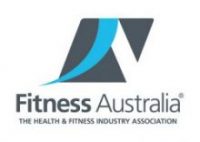Surgery PRevention Program
Avoiding surgery for orthopedic issues such as osteoarthritis
Example Exercise for Knee Early Stage

Avoiding Surgery:
It is important that we start by saying, when surgery is needed, then it is a viable and good option for ongoing disability, pain and loss of function. However, in many cases, surgery may be able to be avoided, or at least drastically delayed with proper intervention.
Osteoarthritis:
Arthritis is a major cause of disability and chronic pain. One publication predicts that by 2032, 8.7 million Australians will have arthritis and other musculoskeletal conditions (reference 1). Joints most commonly affected are the knee, hips and hands, and as the population of Australia ages and the rate of obesity increases, so will the effects of osteoarthritis.
Exercise and Arthritis:
Regular exercise can improve physical impairments associated with arthritis including muscle strength, joint range of motion, proprioception, balance and cardiovascular fitness (reference 2- 6).
Our difference:
Dual qualified practitioners: All our therapists are Physiotherapists AND Exercise Physiologists, making us more qualified than regular physio when it comes to exercise prescription and active rehab.
What to expect?
One of the most important things about our “surgery avoiding” programs, is that the patient has realistic expectations around pain reduction. You may not experience a reduction in pain in the early stages, and sometimes there may even be a slight increase initially. This is a long term program designed to teach you how to PROPERLY take care of your injury, so that you
1. Avoid Surgery
2. Reduce the likelihood of future flare-ups
3. Strengthen your body so you can continue with the things you love
4. Hopefully have some pain reduction, OR eliminate pain all together (this is not guaranteed as no one can predict how the human body will react to certain movements… although, we can assure you that we will keep any flare-ups to a bare minimum compared to some other programs or rehab).
Evidence based:
CLICK HERE for a very thorough publication by Arthritis Australia about the benefits of exercise
As health professionals, we are bound by strict rules to only administer EVIDENCE BASED interventions. This means that you can rest assured that your program is proven and peer reviewed with the highest standard. When you are dealing with medical issues that have complex effects on the body, an Exercise Physiologist is the highest qualification to be able to deal with these. Think of an Exercise Physiologist as an “Exercise Doctor”. Personal Training is a relatively unregulated profession. At Holistic Physio Fitness our trainers are bound by multiple professional bodies regulatory requirements. Our professional bodies including, ESSA, APA, FIA and AHPRA ensure that our standards are maintained yearly. Our trainers have many years of experience in the health industry, and when you want results, experience is what you need.
Injury Prevention:
Get fit AND limit your risk of injury at the same time from completing professionally tailored rehabilitation fitness. This still involves effective training, the only difference is that it is safer because of our professional understanding of injury and the mechanisms that cause injury.
Weight Loss:
-In people with or at risk of clinically significant knee osteoarthritis, every 1% weight loss was associated with a 2% reduced risk of knee replacement and – in those people who also had one or more persistently painful hips – a 3% reduced risk of hip replacement, regardless of baseline BMI. (https://pubmed.ncbi.nlm.nih.gov/35017711/)
-1kg of weight loss equals a 4kg reduction in load through the knee joint
(Messier, S., Gutekunst, D., Davis, C., & DeVita, P. (2005). Weight loss reduces knee-joint loads in overweight and obese older adults with knee osteoarthritis. Arthritis & Rheumatism, 52(7), 2026-2032.)
-346% of your body weight goes through your knee when going downstairs. (
(Andriacchi, T., Andersson, G., Fermier, R., Stern, D., & Galante, J. (1980). A study of lower-limb mechanics during stair-climbing. The Journal Of Bone & Joint Surgery, 62(5), 749-757.)
(Kutzner, I., Heinlein, B., Graichen, F., Bender, A., Rohlmann, A., & Halder, A. et al. (2010). Loading of the knee joint during activities of daily living measured in vivo in five subjects. Journal Of Biomechanics, 43(11), 2164-2173.)
Put simply, Physiotherapists are not allowed to administer weight loss. As we are also qualified Exercise Physiologists, not only are we allowed to administer weight loss programs, we have decades of experience as weight loss specialists. This might be an integral part of your program, especially when it comes to lower limb issues such as knee, hip and ankle pain. CLICK HERE FOR MORE INFO
The latest equipment and technology:
Backed by your Doctor:
Speak to your GP today. Some GP’s may not be up to date with the latest research, but we are. We would encourage you to ask your GP to contact us to discuss your treatment so you feel comfortable about starting a program with us. A multi disciplinary approach to your treatment is necessary and will ensure you have the best outcomes. Evidence is suggesting that holding back from exercise when living with pain, only exacerbates the issue into the future.
The appropriate exercises, intensity, frequency and recovery methods are vital for a successful program. Our facilities are designed to help teach you how to train effectively to meet the recommended requirements.
Why train with someone who lacks the qualifications to deal with your condition?
Holistic Physio Fitness team members are highly trained as Exercise Physiologists and Physiotherapists. Therefore we are more capable of preventing injury whilst training, and fully qualified to manage injury should it occur.
Come and try it, we believe our standards are second to none.
Health Fund Rebates:
Where applicable you can use your private health for our training services. What’s even better is that your trainer is dual qualified meaning you may be eligible to claim on two services (Physiotherapy AND Exercise Physiology). An already affordable service becomes even more affordable. Some funds even cover the whole cost!*
HEALTH FUND REBATES ALSO AVAILABLE ON PERSONAL TRAINING (*where applicable)
REFERENCES:
1. Deloitte Access Economics, A Problem Worth Solving. A report produced by Arthritis & Osteoporosis Victoria.
2013.
2. Uthman, O.A., et al., Exercise for lower limb osteoarthritis: systematic review incorporating trial sequential
analysis and network meta-analysis. BMJ, 2013. 347: p. f5555
3. Cairns, A.P. and J.G. McVeigh, A systematic review of the effects of dynamic exercise in rheumatoid arthritis.
Rheumatol Int, 2009. 30(2): p. 147-58.
4. Lange, A.K., B. Vanwanseele, and M.A. Fiatarone Singh, Strength training for treatment of osteoarthritis of the knee: a systematic review. Arthritis Rheum, 2008. 59(10): p. 1488-94.
5. Silva, K.N., et al., Balance training (proprioceptive training) for patients with rheumatoid arthritis. Cochrane Database Syst Rev, 2010. 12(5).
6. Dunlop, D.D., et al., One Hour a Week: Moving to Prevent Disability in Adults With Lower Extremity Joint
Symptoms. Am J Prev Med, 2019. 56(5): p. 664-672.
7. Wilcox, S., et al., Perceived exercise barriers, enablers, and benefits among exercising and nonexercising
adults with arthritis: Results from a qualitative study. Arthritis Care Res (Hoboken), 2006. 55(4): p. 616-627.
8. Hill, J. and H. Bird, Patient knowledge and misconceptions of osteoarthritis assessed by a validated selfcompleted knowledge questionnaire (PKQ-OA). Rheumatology (Oxford), 2007. 46(5): p. 796-800.
9. French, S.D., et al., What do people with knee or hip osteoarthritis need to know? An international consensus list of essential statements for osteoarthritis. Arthritis Care Res (Hoboken), 2015. 67(6): p. 809-16







